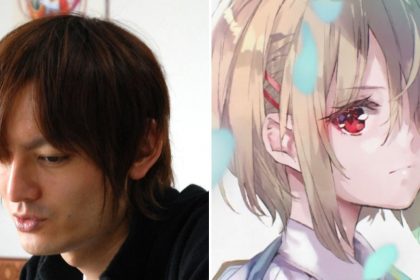A Unique Narrative Structure
In the realm of anime, “Wolf Children” (2012), directed by Mamoru Hosoda, stands out. It serves as a poignant exploration of family, identity, and the conflict between nature and nurture. The narrative divides into three parts. Each focuses on a different stage in the lives of the main characters – Hana, a young woman, and her two shapeshifting children, Ame and Yuki.
Introduction to a Mystical Love
The first part introduces us to Hana, a college student. She falls in love with a mysterious man who reveals himself to be the last of his kind – a werewolf. This segment depicts their love’s blossoming, the man’s secret revelation, and the birth of Ame and Yuki. These children inherit their father’s unique ability to transform into wolves.
Challenges of Single Parenthood
The narrative takes a dramatic turn in the second part. After the tragic death of her mate, Hana becomes a single mother. She faces the challenges of raising her extraordinary children alone in the city. This story part showcases Hana‘s strength and resilience. It highlights the struggles of raising children torn between human and wolf identities in a society that does not understand them.
Further Readings: Family Conflict in Anime: Unraveling the Depths of Emotion
Exploration of Dual Identities
In the third and final part, Hana makes a bold decision. She moves to the countryside, providing Ame and Yuki with the freedom to explore their dual identities. This segment serves as a coming-of-age tale for Ame and Yuki. They grapple with their unique identities and make choices that will shape their futures.
Seamless Interweaving of Genres
“Wolf Children” has a unique narrative structure. It seamlessly interweaves elements of romance, drama, and coming-of-age. This results in a cohesive and compelling story. The progression of the narrative mirrors the growth and development of the characters. It offers a deeply engaging viewing experience that resonates with audiences.
A Critique of the Nuclear Family
The film offers a compelling critique of the traditional nuclear family structure. It particularly examines its post-war Americanized, patriarchal, and capitalist elements. “Wolf Children” explores the limitations of the Japanese nuclear family, a concept deeply ingrained in society since the post-war era.
Struggles of Non-Conformity
The film delves into the pressures imposed by the nuclear family structure. It focuses on Hana as a single mother who must fulfill both parental roles. The unique abilities of her children, Ame and Yuki, further complicate societal expectations. The film presents the possibility of the family transforming into a form that defies societal norms, embracing queerness, nonhuman qualities, and innovative perspectives.
Envisioning Alternative Family Structures
“Wolf Children” contemplates the concept of the nuclear family dissolving completely. This is exemplified by Hana’s family dispersing, with each member choosing their own path. It envisions a future where the notion of family is not restricted to traditional structures but is defined by individual choices and personal bonds.
The Transformation of the Family Unit
The film presents a radical transformation of the conventional family unit. Here, the nuclear family evolves into a metaphor for the roving wolf pack. This transformation challenges the millennial revival of the nuclear family in Japan, especially in the context of economic and environmental precarity and breakdown.
Rejecting Traditional Family Models
By leaving the city, Hana rejects the post-war reproductive bargain and the capitalist nuclear family. This choice initiates the family’s metamorphosis into a roving wolf pack, a form that better suits their unique circumstances and proves more resilient in the face of economic and environmental challenges.
The Concept of ‘Becoming-Wolf’
“Wolf Children” delves into the idea of “becoming-wolf,” borrowing the term from philosophers Gilles Deleuze and Félix Guattari. This concept frames the experiences of Ame and Yuki as they navigate their hybrid identities and confront societal expectations.
The movie poses a profound question to the children: “If you could choose to live as a human or a wolf, which one would you choose?” This question encapsulates the essence of “becoming-wolf.” It emphasizes embracing the fluidity of their identities and the freedom to make their own choices.
“Becoming-wolf” extends beyond the physical transformation from human to wolf. It encompasses the psychological and emotional journey Ame and Yuki undertake as they grapple with their dual identities. Their journey is characterized by moments of joy, confusion, fear, and ultimately, acceptance.
Conclusion: A Tale of Identity and Family Bonds
“Wolf Children” presents a fascinating exploration of familial bonds and identity. It defies conventional narrative structures to deliver a compelling tale. Through its unique three-part structure, the film follows Hana, Ame, and Yuki as they navigate life’s complexities and challenge societal expectations. It reviews the constraints of the nuclear family, suggesting alternative structures that embrace diversity and reject conformity. The transformation of the family unit into a roving wolf pack symbolizes resilience and adaptability in adversity. Ultimately, “Wolf Children” invites viewers to contemplate identity’s fluidity and the power of personal choice in shaping our lives.













